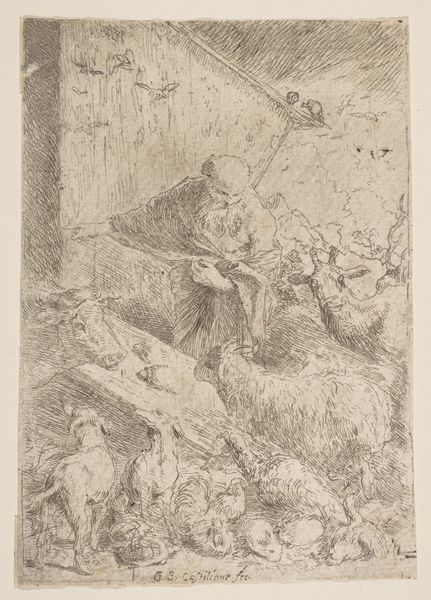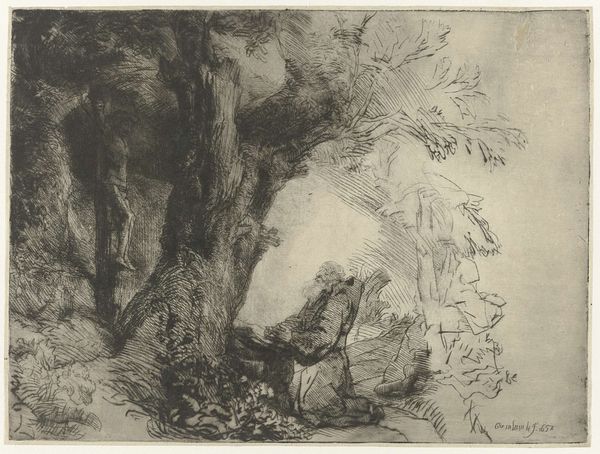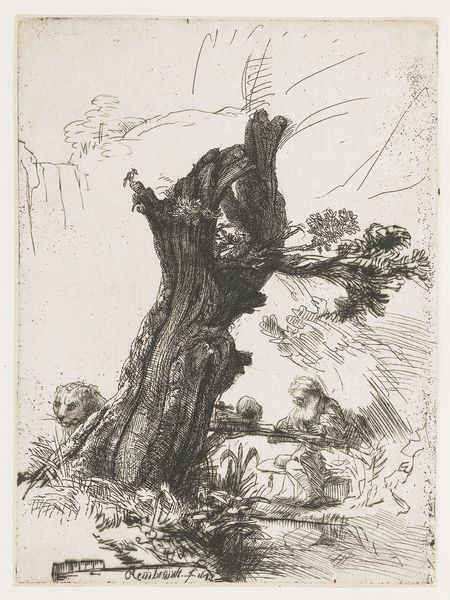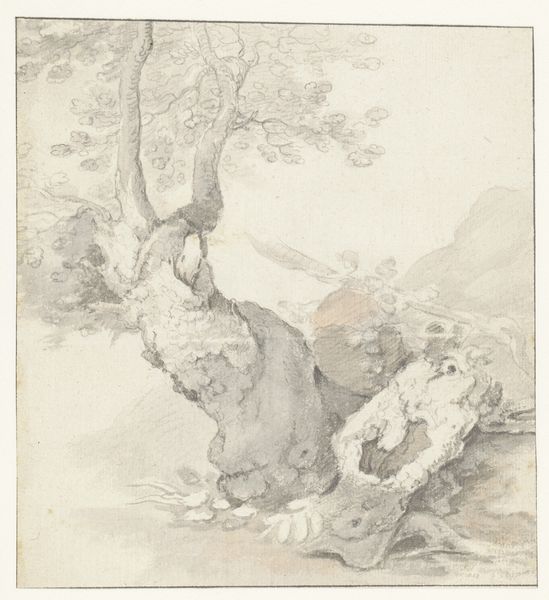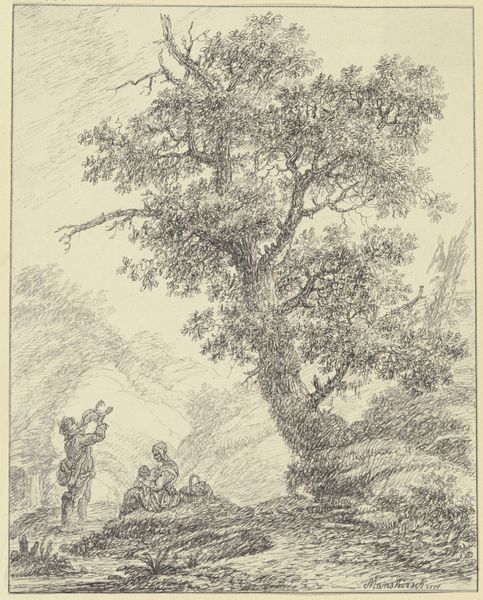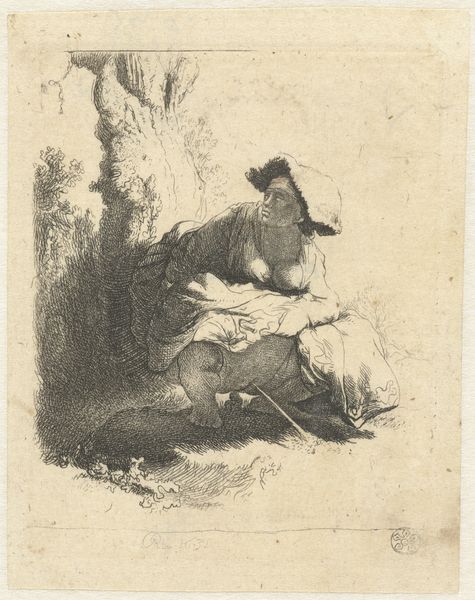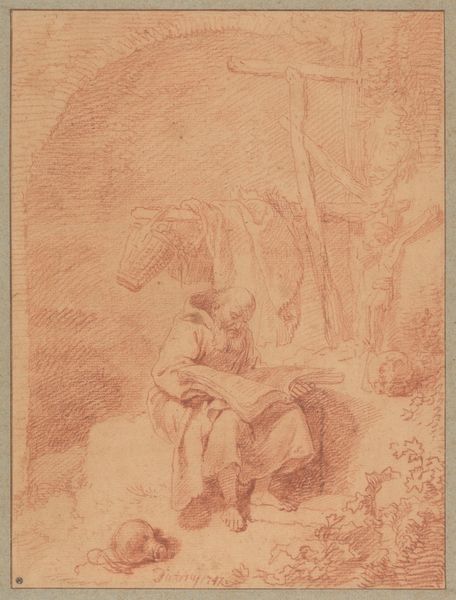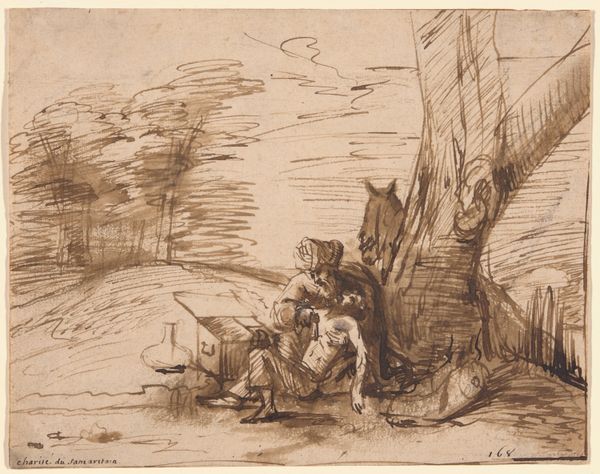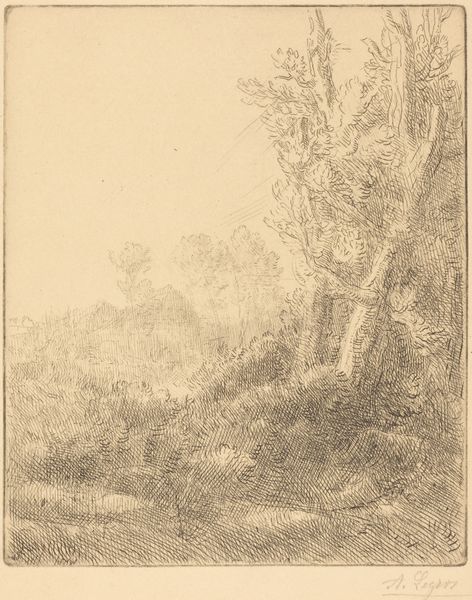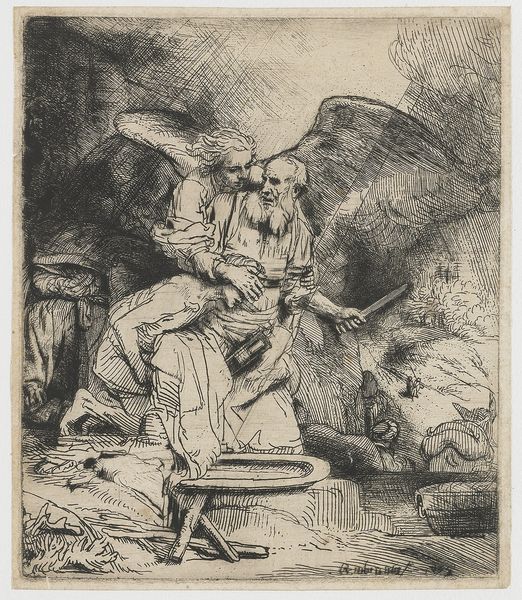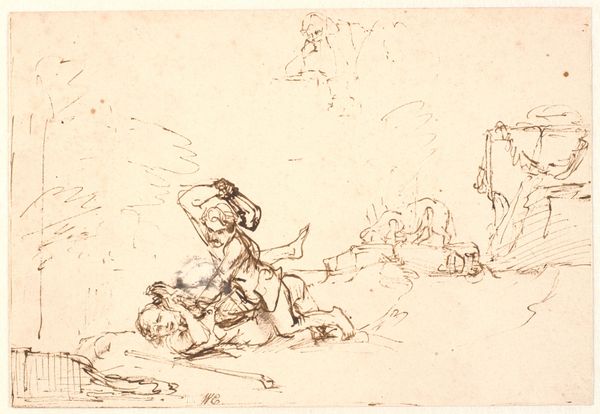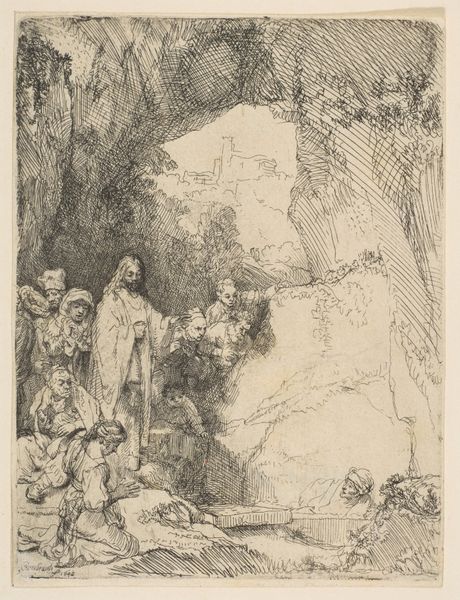
drawing, pencil, chalk, charcoal
#
drawing
#
figuration
#
pencil
#
chalk
#
15_18th-century
#
charcoal
#
history-painting
#
rococo
Copyright: Public Domain
Editor: This is "The Repentance of Saint Peter" by Martin Johann Schmidt, created in 1756. It’s a drawing made with pencil, chalk, and charcoal. The lines are so delicate, and the composition is surprisingly dynamic, almost theatrical, given the somber subject matter. How would you approach interpreting this drawing? Curator: We have to look at the context of materials and their availability in 18th-century Austria. Consider the role of drawing within Schmidt's artistic process—was this a preparatory sketch for a larger painting, or a finished work in itself? The combination of readily accessible materials suggests a democratization of art making, but who would have had access to this image? Was it destined for a private collection, or something else? Editor: That's fascinating. I hadn’t thought about the social implications of the materials themselves. What do you mean by 'democratization of art making?' Curator: Well, consider the accessibility of charcoal, chalk and pencil, compared to say, oils. Schmidt isn't using precious materials; he’s utilizing what’s readily available to create a powerful image. How does this potentially impact the perceived value or status of the artwork itself? Was this made quickly, with other more precious projects planned for more expensive materials? How might it have circulated? These factors challenge notions of "high art". The rapid sketch aesthetic of rococo also suggests new forms of work for artists who had to deliver high volumes for aristocratic patrons, a clear context of supply and demand. Editor: So, by looking at the materials, we can understand more about the production and potential consumption of the artwork within its historical context. Curator: Exactly. And the combination of these readily accessible materials creates this delicate aesthetic. Editor: I see that it suggests this rococo love for fragile appearances. This makes me appreciate the drawing on another level!
Comments
No comments
Be the first to comment and join the conversation on the ultimate creative platform.
